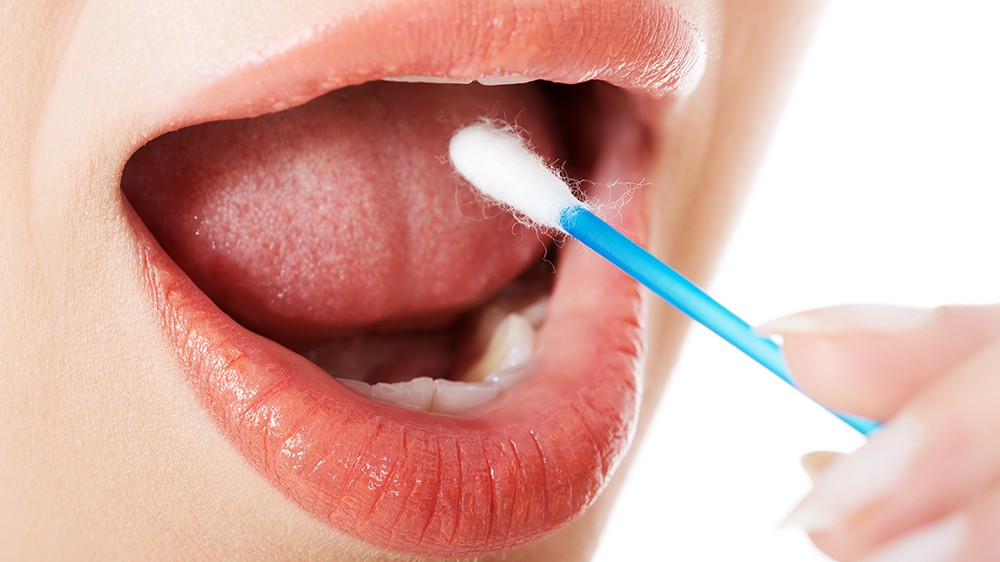“Uh oh. Did I mess up my Paternity Test?”
Getting a paternity test today is much simpler and more affordable than ever, thanks to top-quality, home kits you can purchase easily and affordably at your local retailer. Because answers have a critical impact on a child’s and family’s lives, it’s important that you choose a highly-accredited DNA laboratory to perform the testing. When a paternity test is ordered, you and the lab form a partnership, and each party has a responsibility to ensure DNA samples are handled properly.
As a participant in the test, your job is to make sure samples arrive at the lab in good condition. To get samples, participants collect DNA with cheek swabs. It’s painless and fast, and the process itself isn’t hard at all, but you have to do it with care to maintain the integrity of the DNA. Here are five surprising ways paternity test samples can get contaminated.
Paternity Test Problem #1: Eating, Drinking, Smoking, etc.
Avoid putting anything in your mouth for at least an hour prior to collecting cheek-cell samples. Foreign particles from food, liquids, toothpaste and tobacco byproducts don’t alter the DNA but they can mask it. The consequence is that the sample becomes degraded and therefore unusable for paternity testing. Even babies being tested shouldn’t nurse or have a bottle prior to testing.
The good news: This mistake doesn’t adversely affect your results because the lab always catches this problem and suspends testing immediately. You’ll simply be asked to do a re-collection at no charge, and then testing can resume.
The bad news: You have to wait longer for your results due to the need for re-collection.
How to prevent it: Follow this guideline precisely. If a participant eats or drinks within the hour before collection, simply wait a little longer before testing.
Paternity Test Problem #2: Spitting on Swabs Instead of Swabbing Cheek Cells
With the new popularity of some ancestry tests, it’s easy for paternity customers to get confused between collecting cheek cells and collecting spit, or saliva. The two types of samples are definitely not interchangeable. Robots for relationship testing are designed to extract DNA from cheek cells, and cheek cells provide a more concentrated amount of high-quality DNA.
The good news: There is a chance that the robots and laboratory technicians might still be able to extract DNA for testing.
The bad news: If the samples are contaminated or if the lab is unable to extract enough DNA, you have to wait longer for your results due to the need for re-collection.
How to prevent it: Read directions very carefully and be sure to collect cells from the inside of the cheeks only, avoiding the gum areas as much as possible. And do not spit on the swabs!
Paternity Test Problem #3: Cross-contamination
When you’re handling swabs, it’s critical to maintain the integrity of each swab from start to finish. What does that mean?
Be sure not to:
- Handle the tips of the swab, especially if you are swabbing someone else
- Drop the swab
- Accidentally put swabs from two different people in the same envelope
The good news: These kinds of mistakes are caught at the lab level and won’t affect your results.
The bad news: You may have to wait longer for your results if re-collection is necessary.
How to prevent it: Handle swabs with care and be sure to use separate sample envelopes for each participant.
Paternity Test Problem #4: Some Medical Procedures
The following scenarios can definitely have an effect on paternity testing results:
- A participant has recently had a blood transfusion
- A participant has ever had a bone marrow transplant
In both scenarios, someone else’s DNA has been introduced into a participant’s body and can remain there, either temporarily or for long periods of time. When the paternity testing sample DNA from that participant is amplified in the lab, technicians may see two separate profiles from that one individual.
The good news: Even if you or another participant has had one of these procedures, it is still possible to get conclusive results.
The bad news: It may not be possible to get conclusive results.
How to prevent it: You can’t change the medical procedure you’ve had, of course, but you can let the lab know about it in the submission form. This way, if the lab determines the medical history may be affecting results, you can be notified.
Paternity Test Problem #5: Re-using Packaging
Buccal (cheek) swabs are specially-created for DNA collection and they come sealed in plastic packaging to keep them sterile. While this packaging is perfect for unused buccal swabs, it causes problems for swabs once they’ve been used to collect DNA. Here’s why:
A DNA sample contains cheek cells which are inevitably mixed with some saliva. When you put a wet swab back in the plastic packaging, the sample can no longer ‘breathe,’ and mold nearly immediately starts growing. This mold can degrade or destroy the DNA on the swab so much that the DNA can’t be extracted and tested.
The good news: The lab will catch this problem and ask for re-collection, so it won’t affect your results.
The bad news: You have to wait longer for your results due to the need for re-collection.
How to prevent it: As you collect samples, be sure to place swabs in the paper envelopes provided as noted in the kit instructions, and not back in the plastic packaging. Easy!
Paternity Test Problem #6: Mailing Wet Envelopes
As mentioned earlier, the swabs pick up cheek cells, but also some saliva too. As a result, it’s not unusual for the paper envelopes containing samples to get a little wet. If envelopes are mailed while still damp, they can rip while en route to the lab. This contaminates all samples, unfortunately.
The good news: DNA samples can be collected again using new materials.
The bad news: You have to wait longer for your results.
How to prevent it: It’s best to air-dry swabs as much as possible by holding them by the handles for a little while before placing them in the paper envelopes. But if an envelope gets a little wet anyway, just lay it on a clean counter and allow to air-dry at room temperature before mailing.
The Bottom Line
Our customers often reach out to us after their results are issued and ask, “The swabs were wet and I put them in the envelope anyway. Did that affect results?” Or, “My baby breastfed right before I swabbed him. Could that change the results?” No worries! Contaminated samples cannot “change” results, because the lab always catches the problem and asks for new samples before results are issued. But it is an inconvenience to you because you have to wait longer to get results. Be sure to carefully follow all instructions that come with your paternity testing kit. This prevents any hold-ups in the process and helps you get your results as soon as possible.
Follow us on Facebook and Twitter! If you have questions about paternity tests or other DNA testing services, please contact our Client Support Center at 888-404-4363, Mon-Fri from 8:30 AM to 5:30 PM Eastern Time. Our friendly, expert representatives are ready and happy to help. Get answers anytime by visiting our Help Center.









